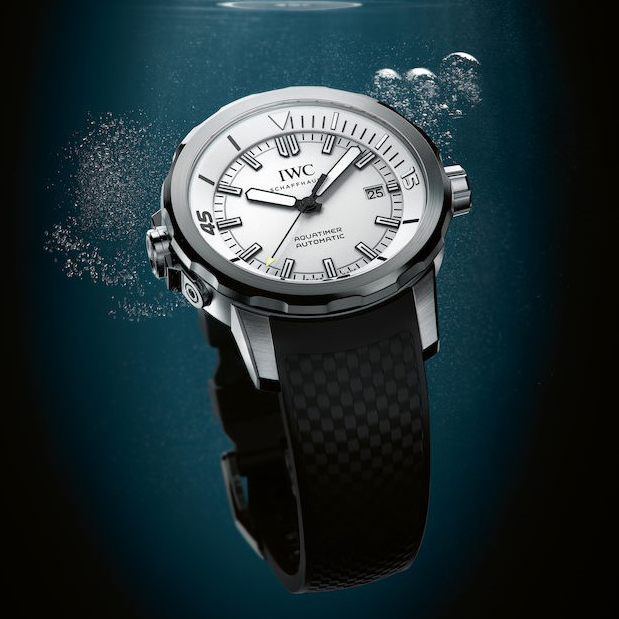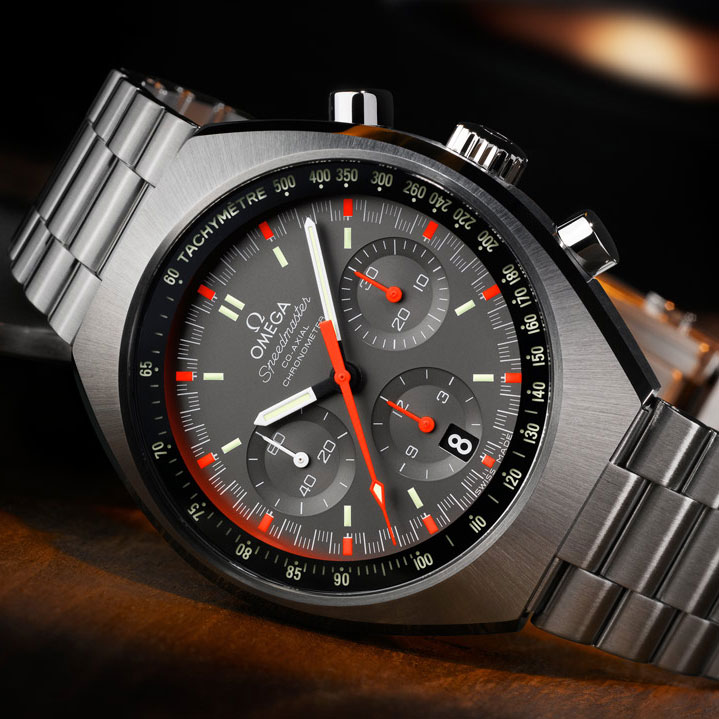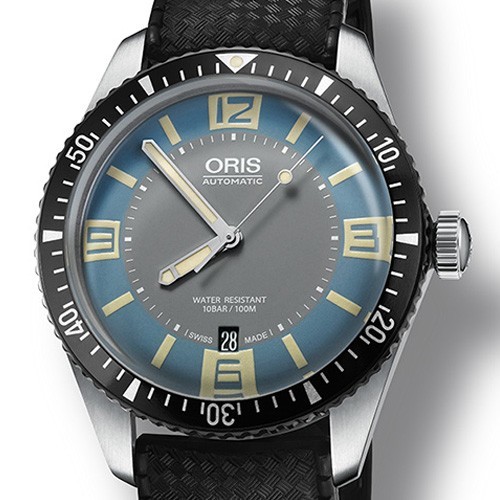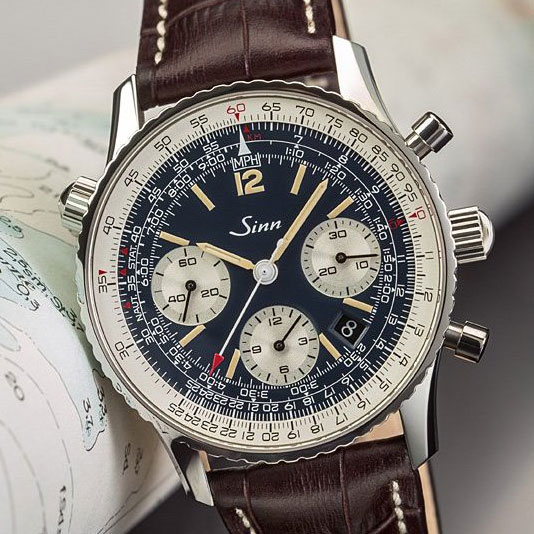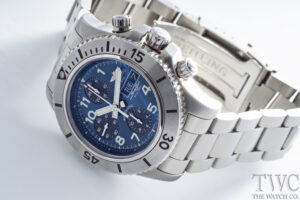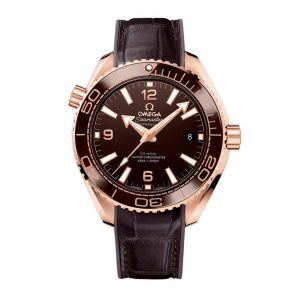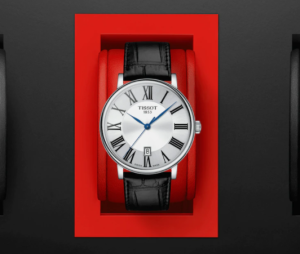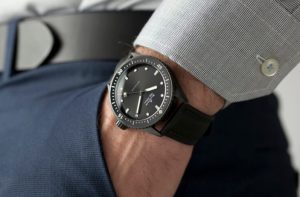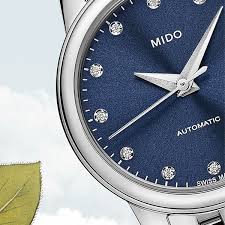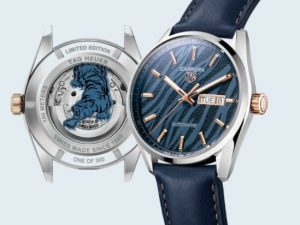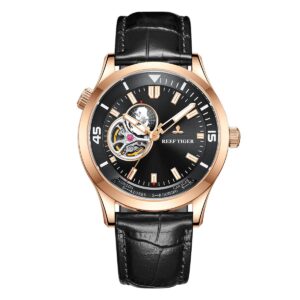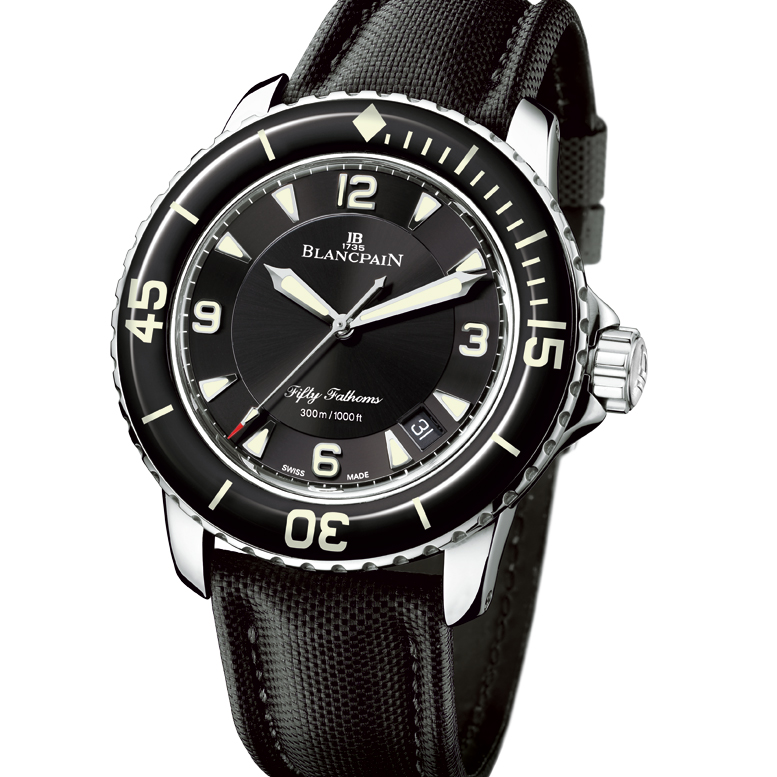
In the realm of modern diving watches, there is almost an endless array of excellent pieces to fit every taste. From modern-styled beasts like the Rolex Deepsea Sea-Dweller, to the futuristic oil-filled pieces by Ressence, the market is full of options. But even in this era of plentiful tool watches, and the plentiful stories behind them, one particular watch and its lineage stand apart as arguably the spark for all contemporary dive watches as we understand them today: the Blancpain Fifty Fathoms.
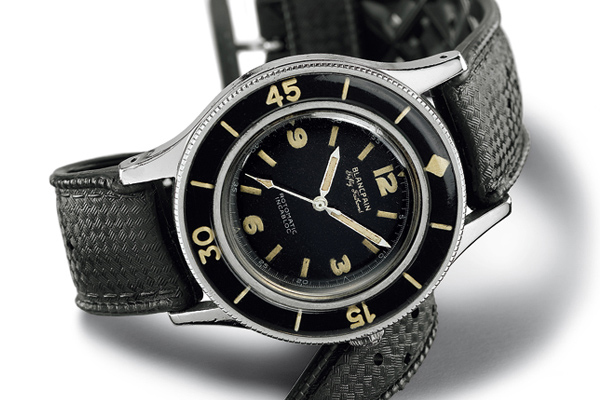
The watch, so named for the “Fifty Fathoms” (300 feet, or 91.4 meters) that it could reach underwater, was originally designed in 1952 as part of a joint project between Blancpain and a French Navy division, the “Nageurs de Combat” or combat swimmers, to address the needs of intense underwater timekeeping. The Frenchmen leading the unit at the time, Captain Bob Maloubier and Lieutenant Claude Riffaud, specified to the brand the need for legibility, underwater luminescence, and a way to measure oxygen consumption. By 1953, Blancpain had fulfilled the request.
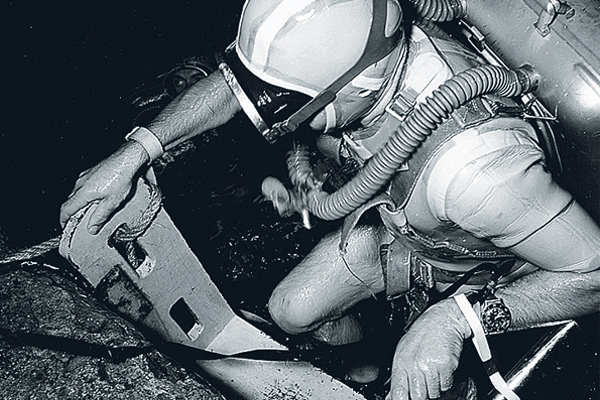
The original reference, pictured at top, sparked many modern diving-related innovations that are still central to most such watches produced today. From an automatic movement, to a clean, easy-to-read and clean dial, to a thick case with screw-down caseback, the design combined a variety of elements that enabled the watch to reach the maximum depths thought possible at the time. A particularly important innovation on the piece was the large, unidirectional bezel, which played the critical role of helping divers determine oxygen consumption without the threat of accidentally missing their surface time. This design element was so important, in fact, that as soon as Blancpain’s patent ran out on it, every single major watch manufacturer began using this safety feature in their own pieces. This is why almost all dive watches from the 1950s and ’60s — with the exception of Blancpain and the few other brands able to license this now-common feature — had bidirectional bezels instead, and it was partly the reason for the rise of the Super Compressor in the mid-1960s as an alternative to non-unidirectional dive watches.
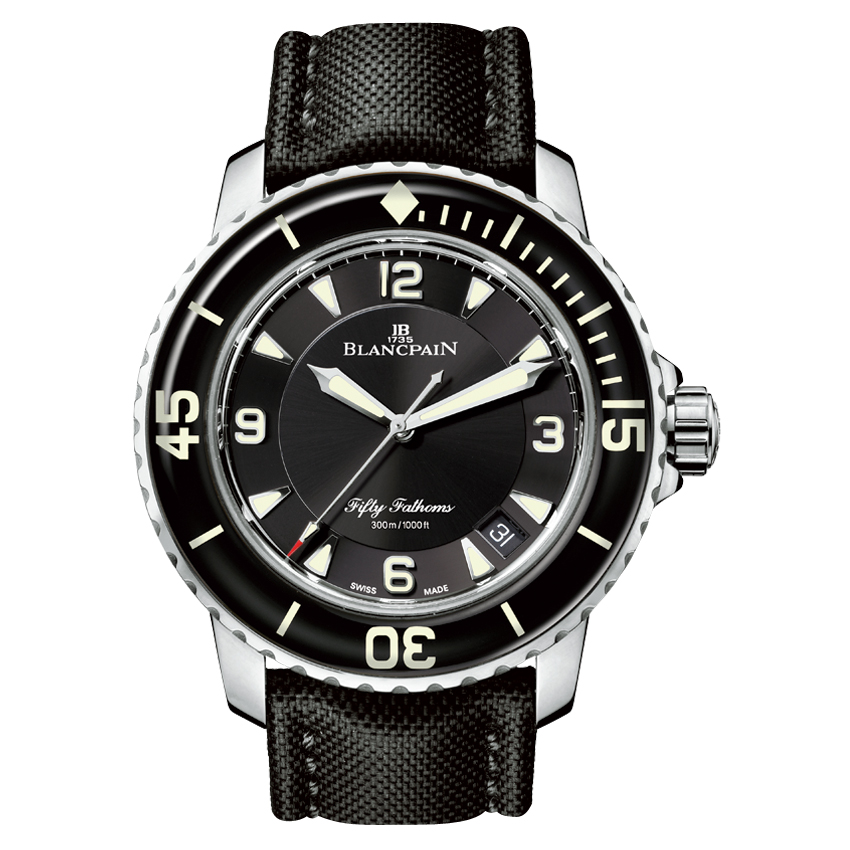
The modern Fifty Fathoms series, heirs to the pieces produced for many different navies and markets over the past sixty-three years, is a collection with a lot of variety. But at the core of this diversified series sits the Fifty Fathoms Automatique, Reference 5015-1130-52 (above). This 45-mm steel timepiece hosts many of the familiar features seen on previous Fifty Fathoms, but with some obvious modern alterations. On the black, sunburst-patterned dial you’ll notice two distinct sections; the central area contains the corporate and series logos, along with the hands, while the hour markers, minute ring, and date are placed in the outside ring. At each quarter hour is a large Arabic numeral, while triangle indices occupy the remaining markers; the date indicator rests at the 4:30 position. The sword-like hour and minute hands, along with the red-tipped arrow seconds hand are all moved by the automatic Blancpain Caliber 1315 (below), a powerhouse boasting a power reserve of 120 hours (or an incredibly long five days), which is highly unusual in an automatic tool watch. Lastly, you should notice the series’ signature diamond mark at the 12 o’clock position, resting upon the thick, unidirectional bezel, which has been a hallmark seen on every Fifty Fathoms since the series’ first production. While prices vary at different dealers, you can most often find the Fifty Fathoms Automatique for just below $11,000.
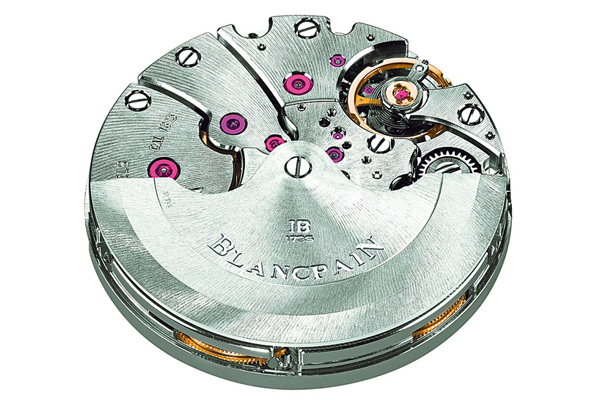
Like many other famous, historically founded series, the modern Blancpain Fifty Fathoms has elements in common with, and also distinct from, its vintage predecessors. In comparison to the historical models, you should notice the similar font used in both the outer rotating bezel and the dial’s Arabic numerals; the modern dial’s numerals are applied, however, rather than printed. You should also notice the hands; while the modern watch’s hour and minute hands are now more sword-shaped than on previous models, these still come across as vintage-inspired, especially alongside the red-tipped arrow pointer for the seconds hand. Finally, of course, there is the aforementioned, signature diamond mark at the 12 o’clock mark on the bezel, which has remained in usage over the past half-century.
As some critics might point out, the modern watch also displays many differences from its historical predecessors — most of which are inevitable consequences of the Fifty Fathoms’ overall move toward being a more luxurious watch and are evident in both the finishing and the price. These also include other new features not previously seen in the series, such as the crown protectors, the shorter lugs, the date indicator, the modern movement with extra-long power reserve, and the sectored dial — all of which are design choices made by Blancpain in recent years to keep the famed watch relevant in the crowded market of contemporary divers.
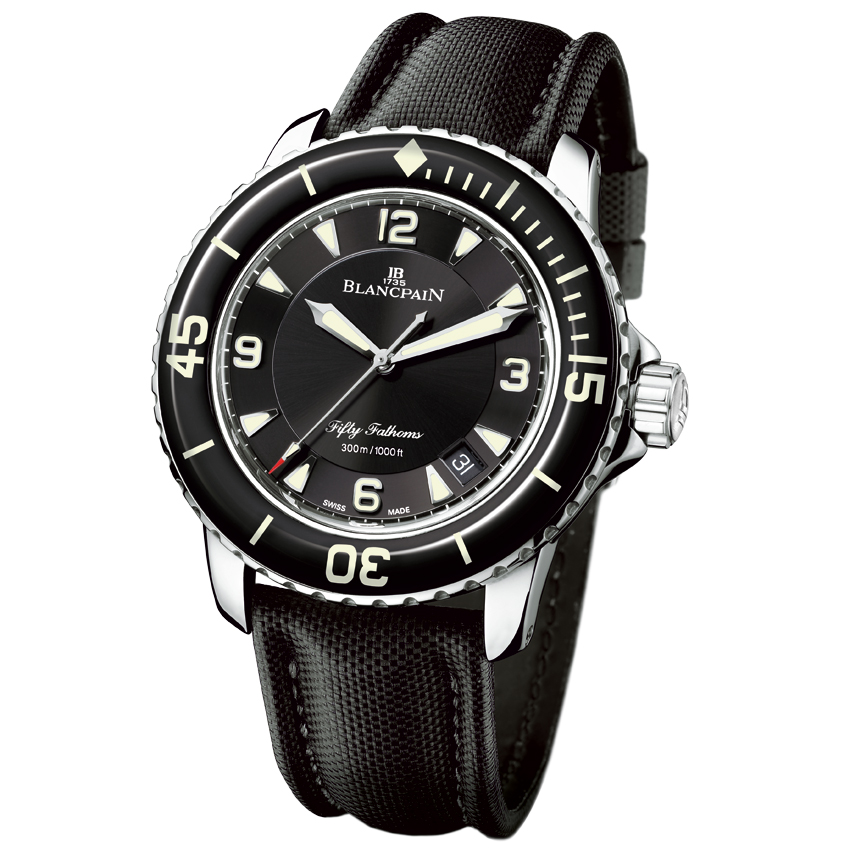
The Blancpain Fifty Fathoms will most likely maintain its foothold in its field for many years to come. With such a strong historical backing, and a variety of distinctive design elements, the contemporary series is clearly able to differentiate itself even in today’s crowded market. While the centerpiece in the Fifty Fathoms series might not be the vintage-inspired beast some might hope for, it is still one of the better luxury divers available to consumers. And with the modern Fifty Fathoms becoming such a diversified collection in its own right, there is most likely a version that can satisfy just about anyone.
For our most recent article, in which I look at the historical inspirations for the Rolex Milgauss, click here.
Caleb Anderson is a freelance writer with a primary focus on vintage watches. Since first learning about horology, he has garnered extensive knowledge in the field, and spends much of his time sharing his opinions among other writers, collectors, and dealers, alike. Currently located near New York City, he is a persistent student in all things historical, a writer on many topics, and a casual runner.
